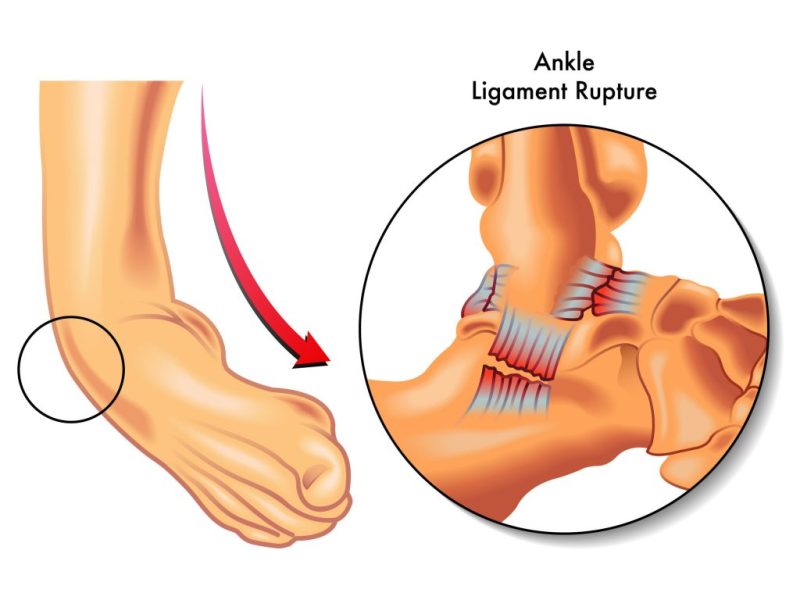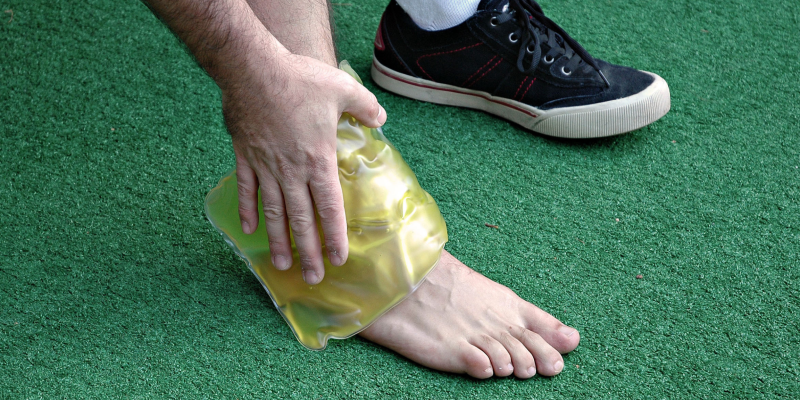As we discussed in the initial post, Ankle treatment – rehabilitation (phase 1) Ankle sprains are one of the most common injuries in sports such as (Basketball. Soccer, and Volleyball). It is one of the most prevalent injuries of the musculoskeletal system. About 50% of these injuries are sports-related. The research highlighted, if it is not treated properly, the chances of injury recurrent would be up to 30% to 40% of the patients.

In this post, we are going to show you with a couple of steps on how to progress your ankle rehabilitation after an acute injury. By this time you have gone through the first step which we explained initially the POLICE protocol.
You may want to know how long after your injury you could move to the 2nd phase? It’s pretty different for every individual and it depends on the severity of their injury.
Few things you may be considered before trying to move to the 2nd phase of ankle rehabilitation.
1- Your ankle swelling should be settled by this stage (you may have slight swelling at this stage, which is normal).
2- The bruised around the ankle should be almost gone.
3- Your range of movement has been improved.
4- The pain around the ankle has been improved (You may still have some sort of pain due to the trauma, which is normal).
The aim of the 2nd phase of rehabilitation is regaining the full range of movements and restore muscle strength. Our exercise routine has been designed whit the least equipment needed.
Regaining the range of movements
1- Calf raises seated. This exercise is done in a seated position. You are using your body weight as resistance. Initially, you are pushing your heel up with the balls of your feet. Slowly lower the heel until your heel back to the starting position, you may try this exercise for 3 sets of 12 – 15 repetitions.
2- Ankle Rotation – clockwise & anticlockwise. You may try these movements seated for 3 sets of 15 repetitions clockwise and anticlockwise. Your aim is to get the full range of ankle rotation while you trying for coordinated movement.
3- Ankle Eversion & Inversion. Eversion means the plantar surface (sole) of the foot turns laterally (turn outwards). Inversion means the plantar surface (sole) of the foot turns medially (turn inwards). You may try these movements seated for 3 sets of 10 – 12 repetitions.
4- Calf stretch – Gastrocnemius & Soleus.
- Gastrocnemius stretch: Stand about three feet from a wall and put your right foot behind you ensuring your toes are facing forward. Keep your heel on the ground and lean forward with your right knee straight. Hold this for 30 to 60 seconds 3 times.
- Soleus stretch: Stand away from a wall and put your right foot behind you and be sure your toes are facing forward. Lean forward at the ankle while bending the right knee and keeping your heel on the ground. Because the knee is flexed, tension is taken off the gastrocnemius and placed on the soleus. Hold this for 30 to 60 seconds.
Restoring muscle strength
Isometric Contraction: Start by sitting with your foot flat on the floor and pushing it outward and then inward against an immovable object such as the wall or heavy furniture. Hold for about 6 seconds, then relax. Repeat for 3 sets of 10 to 15 repetitions.
Calf raises standing on the edge of steps. This exercise is done in a standing position. You are using your whole body weight as resistance. Initially, you are pushing your heel up with the balls of your feet. Slowly lower the heel until your heel come off the edge of steps and feel the stretch on your calves. You may try this exercise for 3 sets of 12 – 15 repetitions. (You may add some extra resistance withholding a kettlebell or even having your backpack on your shoulders).
Eversion and Inversion with the Resistance band.
- Eversion: This exercise will be done seated with a resistance band is wrapped around the forefoot and anchored to a table leg or held by a partner on the other side of the body. The starting position is with the foot in inversion (sole) of the foot turns medially (turn inwards). At this point, the band should just be taught to ensure resistance throughout the whole movement. Turn the foot outwards as far as is comfortable before slowly returning to the starting position.
- Inversion: This exercise will be done seated with a resistance band is wrapped around the forefoot and anchored to a table leg or held by a partner. This exercise works the ankle inverter muscles as you turn the foot in against the resistance of the band. Start with the foot fully everted (sole turned outwards) and the band just taught so that resistance is felt throughout the whole movement.
Our Approach
Dublin Sports Injury Clinic is a Physical Therapy Clinic based in Fitzwilliam Square, Dublin2. We have a holistic approach to our assessment and treatment. The initial assessment helps us to explore the cause of your injury and help you to get pain free shortly and stop any further injuries. We will design a customized training program for you to start with, and we will coach you and monitor your progress closely. We will prescribe relative rest or modified activities as required. Depending on the individual requirement, we apply manual therapy accompanied by stretching to restore tissue elasticity and reduce the strain in the muscle-tendon unit with joint motion.
FOLLOW US ON YOUTUBE AND GET ACCESS TO OUR WEEKLY FREE REHABILITATION EXERCISES.
Next step
Want to get in touch with our team of the therapist or you are looking for some advice? Simply fill in your details below & we get in touch with you shortly.
Disclaimer: This article is for information only and should not be used for the diagnosis or treatment of medical conditions. You can contact us if you would like to book an appointment or get some advice from our therapist.


One Response
Wonderful goods from you, man. I have understood your stuff previous to and you’re just too great.
I actually like what you’ve acquired here, certainly like what you are saying and the way in which you say it. You make it enjoyable and you still care to keep it sensible.
I can not wait to read far more from you. This is actually a terrific site.